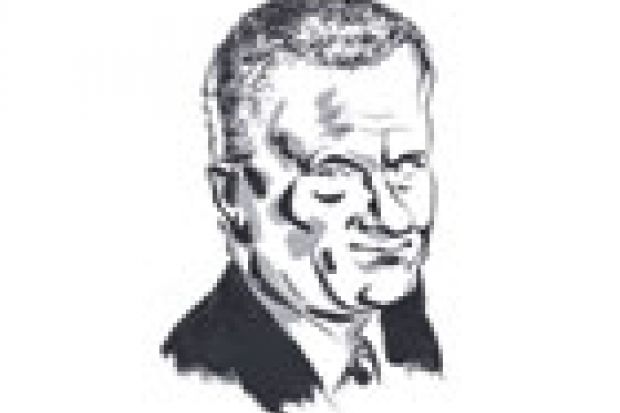Richard Wagner turns 200 on 22 May. Celebrations of the bicentenary of the birth of one of the 19th century’s greatest musicians are not without controversy. For every opera house mounting wall-to-wall performances of his work, there is another celebrating the bicentenary of the other great opera composer of that century, Giuseppe Verdi, or studiously snubbing the opportunity to celebrate either. The Semperoper Dresden, where Wagner worked for seven years, is provocatively mounting performances of Fromental Halévy’s The Jewess in the week leading up to Wagner’s special day.
Two centuries on, Wagner still fails to become a “classic” composer. While contemporaries such as Verdi and Johannes Brahms are safely packaged up, Wagner remains volatile. Can his operas stand aside from his own life circumstances? How autonomous can music really be from the other arts in his heady operatic mix? And, hotter still: where do we sit now on subsequent collective interpretation - what musicologist Stefan Mösch once called the “hypnotic depiction of collective identity”? I mean, of course, German collective identity.
In a scientific age where clarity of expression and replicability is meant to be everything, Parsifal’s essential enigma is difficult, challenging and liberating
One of my annual rituals is to fly east each Easter to see Wagner’s final opera, Parsifal. Because of its Good Friday references, you can guarantee its performance in many Central European opera houses. For three years I went to Vienna, then Munich, Budapest and, this year, to the Deutsche Oper Berlin. Because of the Wagner celebrations I also took in Die Meistersinger von Nürnberg and Tannhäuser on subsequent nights, which reminded me how much recycling of topics and musical self-citation there is in Wagner, even though he was not a large producer. Actually, his lifetime average was just 54 minutes of music per year, just six minutes short of Verdi but six hours short of Mozart!
I hear Parsifal each year because I still don’t understand what it is really about. While I’ve made reasonable progress with many of Wagner’s operas, each year I feel that I’m grappling with Parsifal for the first time. In a scientific age where clarity of expression and replicability is meant to be everything, such deliberate and sustained ambiguity - such essential enigma - is difficult, challenging and liberating in the interpretative licence it affords. This is so especially in Wagner’s case, because the deep-seated ambiguity dwells strongly (although not necessarily equally) in the verbal text, the music and key aspects of the staging - all of which Wagner himself crafted.
Parsifal is a mystical drama. The eponymous character, the Fool but also the Hero, eventually saves the Knights of the Holy Grail. By going from place to place on my Easter pilgrimages, I see different productions with astoundingly different Parsifals - astounding because, of course, the words and the notes of the music are invariable. But one Parsifal is something of a hippy, another a mummy’s boy, and from Berlin in 2013 came the suited Fool, whose leadership and entrepreneurship rivalled that of a newly minted MBA.
Seeing and hearing Parsifal each year reminds me that we never “solve” great art, nor perhaps even progress in our understanding of it. Rather, different people and ages interpret it differently, and those interpretative currents ebb and flow according to our imaginative capacities. Hence, the enigma of commentary upon Wagner’s operas can rival the enigma of the works themselves.
The conductor of February’s production of Parsifal at the Metropolitan Opera in New York, Asher Fisch, recently commented that in the opera “you have to accept that the inner rhythm of the piece comes from complete tranquillity. It’s like trying to lower your pulse and your blood pressure to make this music speak in the right language.” This comment seems to mean that Wagner’s music spreads, slowly engulfs, and thereby becomes comprehensible. What or who does it engulf? Well, you.
As I sat among the Berlin audience a few weeks ago, it was incredible how spellbound we all were. Silent, attentive, absorbed: in a word, rapt. Over the many hours of music, time was suspended. We were caught in the hypnotic web of motives and never-ending melodies. It is not surprising that in his book What Good are the Arts? (2005), British literary critic John Carey places all his Wagner references within the chapter “Can art be a religion?” - and within the context of Nazi art-worship.
Art is not immortal, Carey concludes, but its use can be immoral. “From Parsifal I build my religion, a sacred service in ceremonial form without theological trappings,” Hitler is reported to have said. “Only in heroic dress can one serve god.”
London Review of Books publisher Nicholas Spice’s recent essay in the publication, “Is Wagner bad for us?”, ruminates: “Have I swallowed Wagner or has Wagner swallowed me?” Using Tristan und Isolde as a case study, he catalogues the repeated claims that Wagner’s music can cause lack of self- control, “moral atrophy” and loss of what Auden called the “dream of safety”. But Spice ends up rejecting interpretations based upon the passivity of the listener. It is up to us to manage Wagner’s undoubted charisma. Rather than asking whether Wagner is bad for us, perhaps “we are bad for Wagner”.
The track from collective interpretation to the strident ideology and “poisonous megalomania” of a later era is an important theme in US academic William Kinderman’s forthcoming study of the genesis of Parsifal, due out in June.
